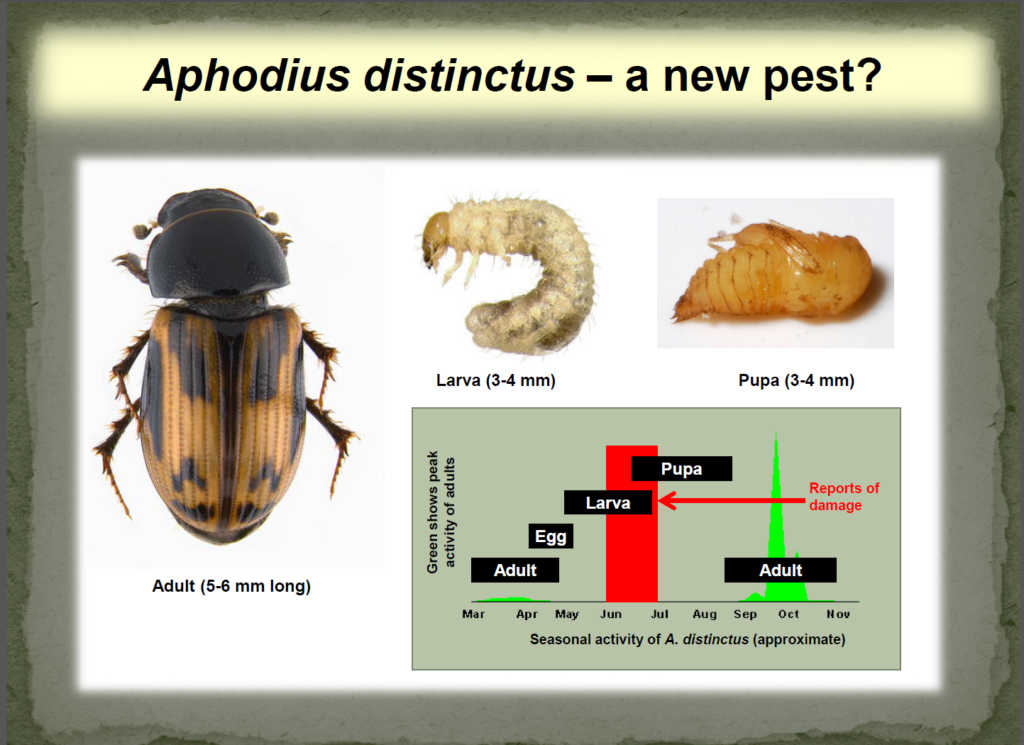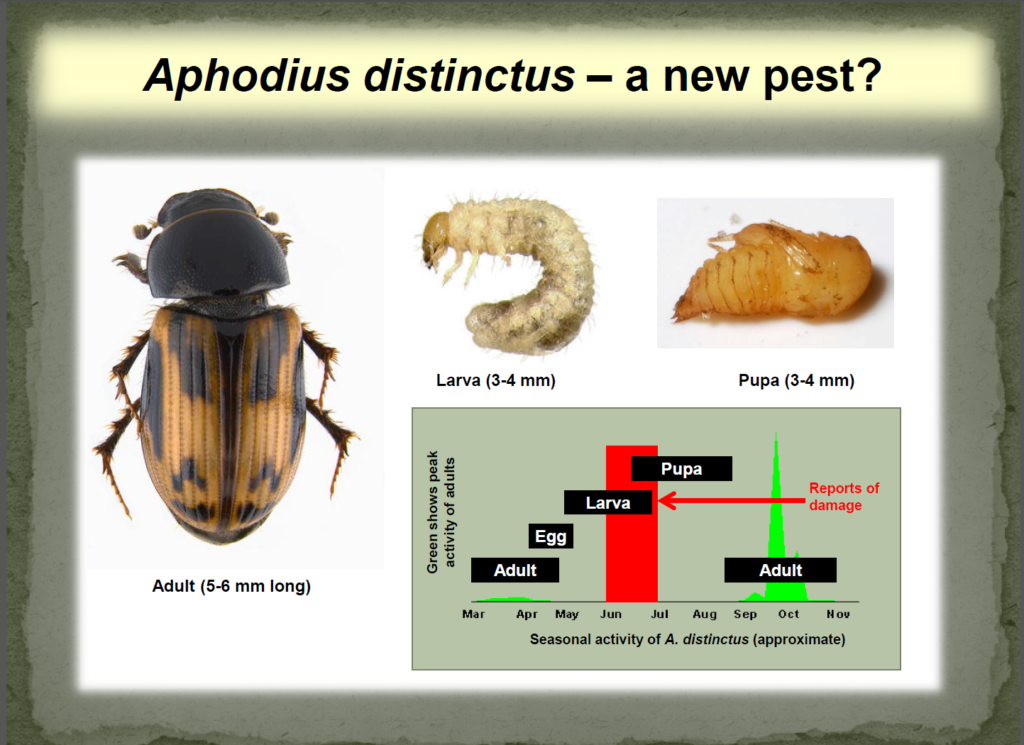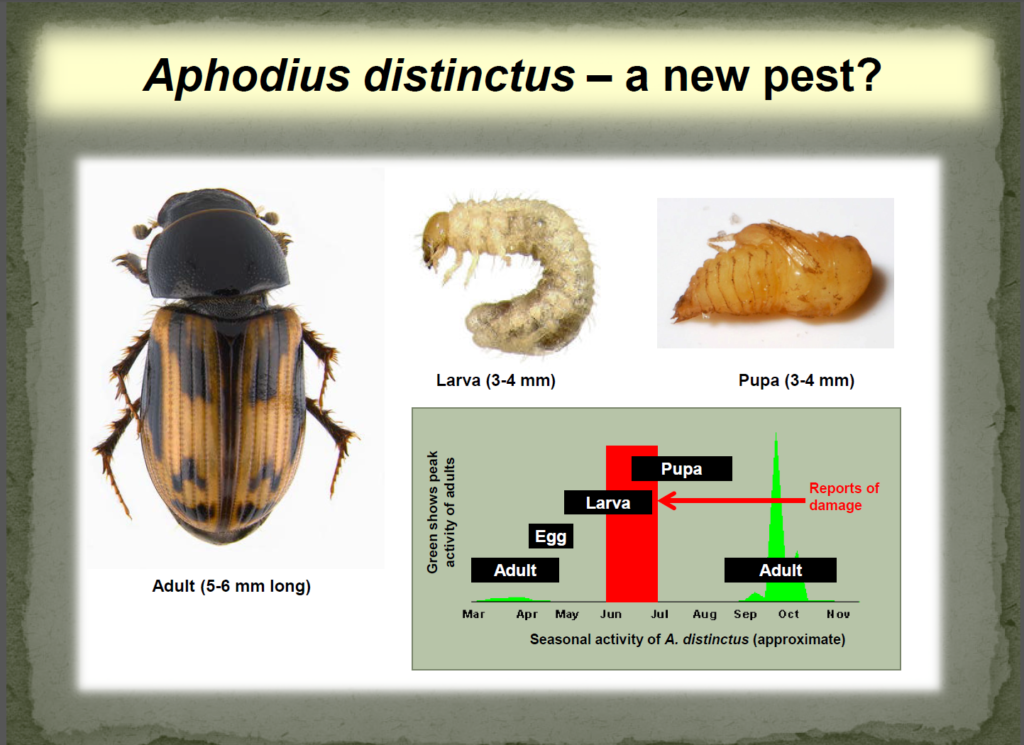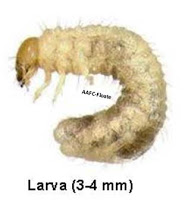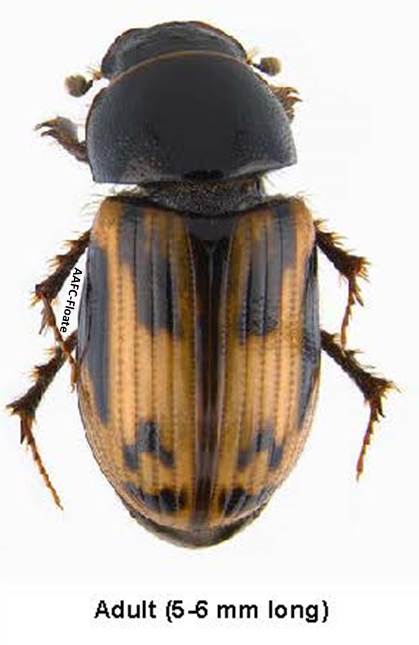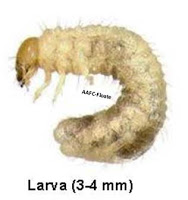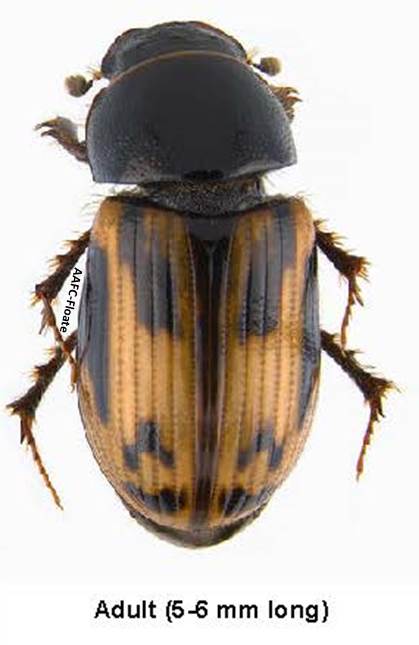Scarabaeidae – Reminder – Each June brings scattered reports across the Prairies of white grubs associated with crop damage. In fact, several species of Aphodius, Phyllophaga, Polyphylla or even small Aetenius produce larvae described as “white grubs”.
Recently, crop damage reports have been associated with a grub identified as the larvae of the beetle Aphodius distinctus (see below). This common beetle is not known to be a pest, but there is an ongoing effort to gather information to develop a ‘pest’ profile. Additional information is online at Top Crop Manager. Please send reports of this insect and associated information to Dr. Kevin Floate (Agriculture and Agri-Food Canada, Lethbridge, AB).
